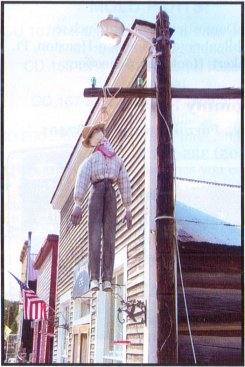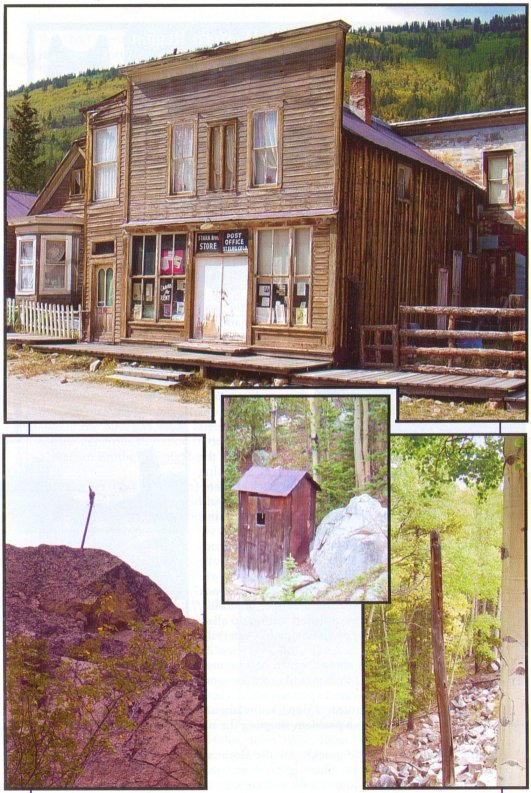West of Denver, in the heart of the Rocky Mountains, lies a relic of the
past. The mining town of St. Elmo is only a reflection of its storied past, but
if you look close you might just get more of a glimpse of its history than the
obvious false-fronted buildings. An effigy hangs from a telephone pole outside a
. store. Is it a warning to collectors to leave the insulators alone? That's ok;
there are some for sale inside. Behind those old buildings are numerous outhouses
dating back to the 1860's. All were padlocked shut. To keep them from being
used? Or to keep bottle and insulator hunters from digging in them?

The Denver and South Park Railroad came through St. Elmo (see reference at
bottom of page 36). On the north side of the tracks there once was a power line,
and an occasional pole still stands (picture on lower right of opposite page). I
was never able to find any glass or porcelain shards to determine what might
have been used on the line. The south side of the tracks sported a telegraph
line that some Colorado collectors say contained No.2 Telegraph Insulators such
are described on pages 30 - 37. The poles, if you can call them that, were
hand-forged steel rods ranging in height from 3 to 4-and-a-half feet. They were
set into solid rock by hand drilling "John Henry" style. These can be
seen on the cliffs above the railroad (opposite page - bottom left), sometimes a
hundred vertical feet above your head. Most, like the one shown, I didn't even
try to climb up to. I did... quite ungracefully... work my way up to another one
in hopes of at least removing the sidepeg and perhaps finding some glass shards
of an insulator. No such luck. There was no glass to be found. The side pin was
fastened via holes drilled through the forged steel by stove bolts that are
rusted solid by over a century of rain, snow and ice. The "poles"
themselves remain unshakeable, set as firmly into solid rock today as when they
were placed.
If you visit St. Elmo, enjoy its sights. But be careful when hiking.
Climbing the cliffs can be dangerous; and locals say the insulators were
recovered decades ago.
Howard Banks



































































